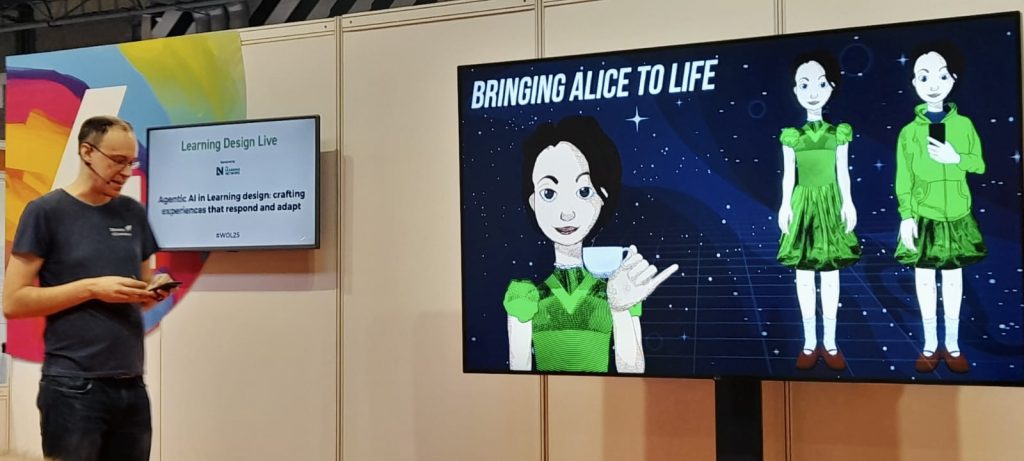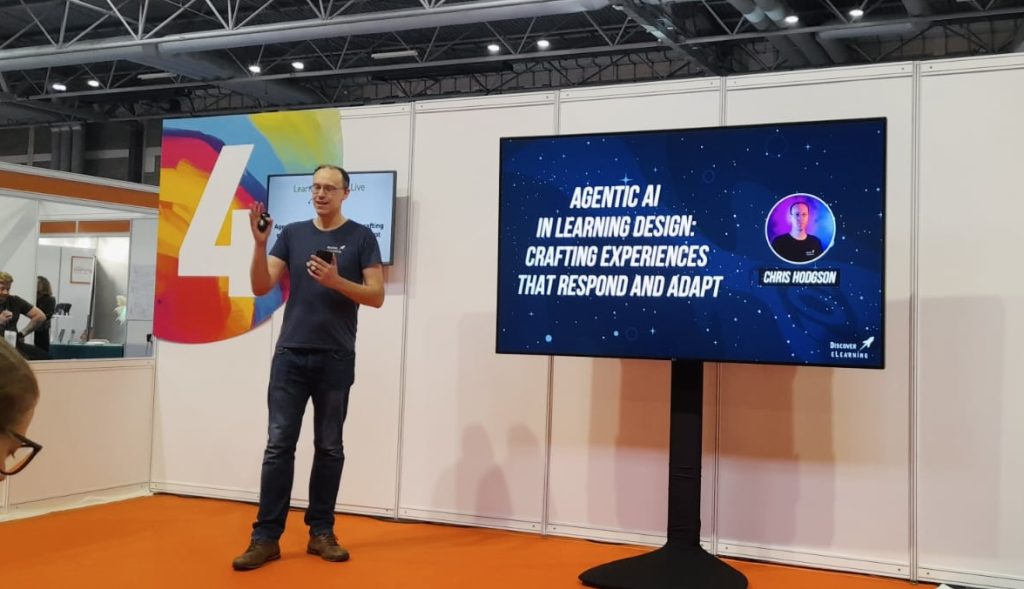
🔥 Explore the NEW Fire Mods web app! Visit: https://firemods.co.uk
Our next free workshop event will be announced very soon! Explore Our Online Training Courses and Master Classes!
Visiting the NEC in Birmingham for the first time for this year’s World of Learning exhibition and conference was an experience in itself. I don’t think I fully appreciated just how vast that place is until I found myself trying to navigate between halls! I was honoured though to have been invited by The Learning Network to present on the topic of Agentic AI in Learning Experience Design.
A theme that continues to evolve rapidly as real-time conversational AI tools mature. My goal was to demonstrate what’s already possible today, using a real-world client example developed for the Alice in Typhoidland project — and to share some of the key design principles that make these experiences both effective and engaging.

The concept for Talk to Alice began when the Alice in Typhoidland team approached Discover eLearning to explore how generative AI could extend their existing digital exhibition. The challenge was to create a proof of concept that brought their iconic character, Alice, to life — one that could listen, respond, and adapt dynamically to each learner’s input.
Using Articulate Storyline 360 as the delivery platform and integrating it with the ElevenLabs Conversational AI system through our own eLearning Magic Toolkit, we built an agentic learning experience capable of real-time voice interaction and contextual awareness. The result was a natural, conversation-led exploration of public health history, powered by AI but shaped around human curiosity.
Across the development process, several key insights stood out — lessons that I shared during my session at World of Learning and that continue to influence how I approach AI-enhanced learning design today.
1. Scaffolding prevents cognitive overload
AI has a habit of giving learners everything at once. The trick is to guide the conversation so the agent behaves more like a coach than a search engine — pacing information, prompting reflection, and encouraging learners to ask for more rather than simply being told everything upfront. Scaffolding ensures that curiosity builds understanding rather than confusion.
2. Exit ramps keep curiosity focused
Learners naturally want to explore, and conversational agents make that incredibly easy. But without boundaries, discussions can spiral into tangents. By designing deliberate “exit ramps” that bring focus back to the learning objective, we can celebrate curiosity while maintaining structure and relevance in the dialogue.
3. Tailored personas increase impact
One-size-fits-all AI personas don’t work. The most effective agentic experiences are built on clearly defined, specialised roles. By keeping each model’s purpose narrow and context-rich, we ensure responses feel authentic, relevant, and trustworthy. In Talk to Alice, the agent’s personality and knowledge base were carefully tuned to maintain a balance of curiosity, empathy, and factual grounding.
Beyond Talk to Alice, the principles of agentic design are starting to influence a much wider range of learning and business systems. Tools like n8n are opening the door to fully connected workflows — where learner interactions inside Storyline could trigger events across multiple systems, from analytics updates to personalised follow-up content. This is where I see the true potential of agentic AI: in creating adaptive, data-aware experiences that evolve intelligently with the learner.

As my first visit to the World of Learning, what stood out most wasn’t just the scale of the venue, but the shared excitement across our community for how technology continues to reshape learning. Conversations with innovators like the team at AI British Sign Language reminded me how far these tools can reach when applied with creativity and purpose — opening doors for accessibility, engagement, and inclusivity.
The landscape of AI in learning will continue to evolve into something new by the time the next WoL conference rolls around, and it will be interesting to take not of meaningful advances from practitioners that are putting thoughtful design first, and not just technology for technology’s sake.
As I said when closing my presentation: ‘I see real potential that we can all build smarter learning experiences that trigger data-driven actions that support the broader process of learning.’
Subscribe to receive notifications on new insights and innovatiuons.
Why not book a consultation call with us? We’re here to assist you with any questions or concerns you may have.
Please note: All bookings are subject to confirmation. We reserve the right to reschedule based on availability.